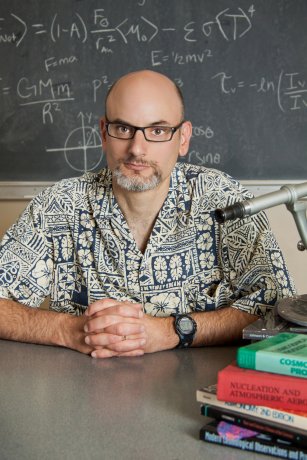
By David Trilling
Associate Professor of Physics and Astronomy
Astronomers are always open to another point of view, and this one was pretty cool.
Recently, I flew on NASA’s Stratospheric Observatory For Infrared Astronomy, known as SOFIA: It’s a 747 airplane with a hole cut in the side, where a telescope looks out. And it’s probably the closest I’ll ever come to being an astronaut.
What I’m looking for is evidence of planetary systems around other stars, and SOFIA’s unique vantage point—from 41,000 feet, above almost all water in the Earth’s atmosphere—provides an unparalleled view.
It was a pretty amazing experience. I felt like we flew a telescope to space and back again. Our flight—with more than 20 technicians, engineers, pilots, some middle school teachers and just one lone astronomer on board—took off from Palmdale, Calif., flew toward Alaska and then far out over the Pacific Ocean before returning to base at the end of the night.
The observatory is an interesting mix of very high tech—the telescope itself and its operating systems are like what NASA flies in its space missions—and old school, since most of the plane hasn’t been updated since the 1970s, when it was built.
The observation I made was the first of a small survey of stars that Dave Koerner and I suspect have planetary systems, based on previous work that we carried out with the Spitzer Space Telescope and published in 2010. (Dave was the first author on this work.)

I would fly on SOFIA again if given the opportunity, but there is probably a long waiting list, since only a handful of scientists who are using data from the telescope have actually flown with the observatory.
For now, I’ll have to stick to more mundane matters, like analyzing the data. But it’s pretty fun to tell stories about riding in an airplane with a telescope inside.



